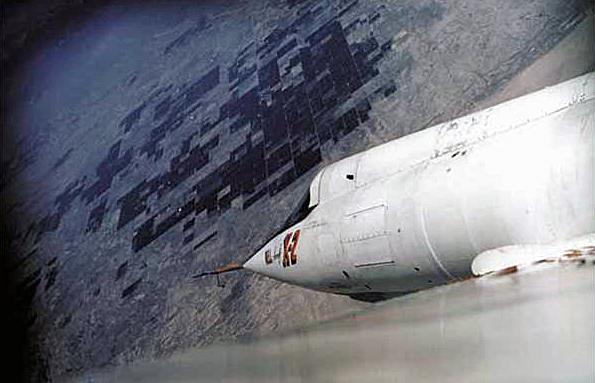First Space Man

Sixty-five years ago today, the rocket-powered USAF/Bell X-2 aircraft established a new altitude record when the vehicle soared to 126,200 feet above sea level. This historic accomplishment took place on the penultimate mission of the type’s troubled 20-flight aeronautical research program.
The X-2 was the successor to Bell’s X-1A rocket-powered aircraft which had recorded maximum speed and altitude marks of 1,650 mph (Mach 2.44) and 90,440 feet, respectively. The X-2 was designed to fly beyond Mach 3 and above 100,000 feet. The X-2’s primary mission was to investigate aircraft flight control and aerodynamic heating in the triple-sonic flight regime.
The X-2 had a gross take-off weight of 24,910 lbs and was powered by a Curtis-Wright XLR-25 rocket motor which generated 15,000-lbs of thrust. Aircraft empty weight was 12,375 lbs. Like the majority of X-aircraft, the X-2 was air-launched from a mothership. In the X-2’s case, an USAF EB-50D served as the drop aircraft. The X-2 was released from the launch aircraft at 225 mph and 30,000 feet.
The day was Friday, 07 September 1956. The pilot for the X-2 maximum altitude mission was USAF Captain Iven Carl Kincheloe, Jr. Kincheloe was a Korean War veteran and highly accomplished test pilot. He wore a partial pressure suit for survival at extreme altitude.
While the dynamic pressure at the apex of his trajectory was only 19 psf, Kincheloe successfully piloted the X-2 with aerodynamic controls only. The X-2 was not configured with reaction controls. Mach number over the top of the trajectory was supersonic (approximately Mach 1.7).
Kincheloe’s maximum altitude flight in the X-2 (S/N 46-674) would remain the highest altitude achieved by a manned aircraft until August of 1960 when the fabled X-15 would fly just beyond 136,000 feet. However, for his achievement on that late summer day in 1956, the popular press would refer to Iven Kincheloe as the “First of the Space Men”.

